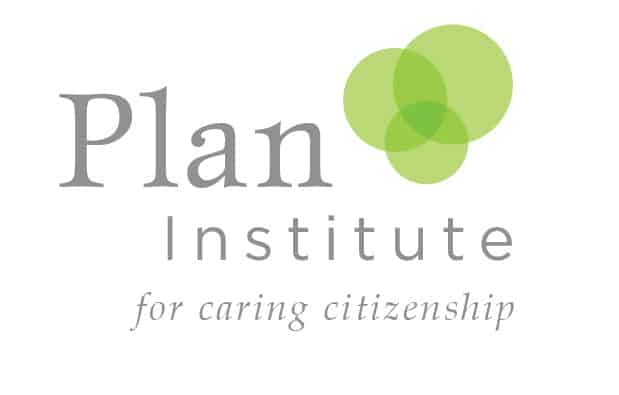by Michelle Hewitt, Co-Chair, Disability Without Poverty
This month, everyone is talking about the Registered Disability Savings Plan (RDSP) – and so they should! Since its creation in 2008, the RDSP has been at the forefront of looking after the futures of disabled Canadians. According to a 2017 review, over 168,000 people with a disability have set up an RDSP. However, this only represents about 37% of Canadians who qualify for the Disability Tax Credit (DTC) and are therefore eligible to open an RDSP. We need to spread the word about the RDSP to ensure that everyone who qualifies for the DTC can begin saving for a more secure and stable future.
At the same time, however, we need to acknowledge that the RDSP is just one piece of the puzzle. The RDSP is focused on the future security of Canadians with disabilities. But what about right now? What about the more than 1.3 million disabled Canadians who are currently living in poverty?
As anyone who has experienced it will know, poverty is exhausting. Living in poverty makes it hard to concentrate on anything other than where the money is coming from so that you can keep a roof over your head and food on the table. Every day, you live in fear that the next phone call or knock on the door could be another demand for payment.
In many ways, disability poverty is even more destructive. It is tied up with discrimination and feels like an assault on our mental and physical differences. Furthermore, as employment opportunities are often closed or extremely limited for those of us with disabilities, it often feels like there is no way out.
Four out of every 10 Canadians who live in poverty also have a disability. In comparison, about two out of every 10 Canadians have a disability. This means that disabled Canadians are disproportionately more likely to live in poverty compared to their non-disabled counterparts. We need to take immediate action to address this inequality.
That’s why I’m so honoured to co-chair a new movement, Disability Without Poverty, that is steadfastly working towards eliminating poverty for all disabled Canadians. Alongside Luca Patuelli, I lead a diverse group of Canadians with disabilities that includes people of all ages from all across the country. Disability Without Poverty is working with individuals and established organizations to create a tidal wave of people committed to ending disability poverty. Our National Director, Rabia Khedr, is the first disabled Muslim woman of colour to lead a national disability movement. We are all fired up to make a difference.
In the September 2020 Throne Speech, the federal government had a pleasant surprise for us – they announced their intention to introduce a new Canada Disability Benefit (CDB), which would be a supplement to the benefits already in place in our provinces and territories. This led to a lot of discussion in the disability community about what the benefit should look like, including how much and who would receive it. One question – “When should it happen?” – was easy to answer. Yesterday. There is simply no more time to waste for Canadians with disabilities who live in poverty.
A recent Angus Reid poll told us that 89% of Canadians also believe this change needs to happen immediately because eliminating disability poverty is simply the right thing to do. Unfortunately, Canadians also told us that they don’t have faith in any of the levels of government to carry out this crucial work. I write this post in the early days following the federal election and it is a nervous time. We hope that the federal government will keep their promise of a new Canadian Disability Benefit. It is our job to keep reminding them that we, the disability community, are here. That we are ready to remind them of their promises and ready to work with the government to fast-track a benefit that gets the funds into the hands of disabled people as soon as possible.
Therefore, the task of creating this new Canada Disability Benefit is too important to leave it to our government alone. It takes all of us – Canadians with disabilities and our allies – to come together to lead this work. At Disability Without Poverty we are driven by three main principles:
- Nothing About Us Without Us. We need a benefit that includes disabled people in a meaningful and substantive way at every stage of the process, from design to distribution. We need a benefit built on the principles of autonomy and equity so that disabled Canadians receive an individualized benefit, not one based on the income of their family.
- Accessibility and Inclusion. The new benefit must be easily available to as many disabled people as possible. We all know that we already jump through too many hoops to access the services we need, so everyone who has already been accepted for a disability benefit – provincial, territorial, federal or private – must be given straightforward access to the CDB. For those new to the benefits system, we call for a streamlined application process, built on the principles of inclusion.
- Economics. We look to the provincial, territorial and federal governments to work together on the CDB in cooperative federalism. This benefit must benefit people! This means no clawbacks from existing provisions, whether through financial penalty or reduction of services. We look for this benefit to not only lift disabled people above the poverty line but to lift them above the disability poverty line – because we know it costs more to be disabled.
The RDSP is an incredibly valuable tool for people with disabilities to take hold of their financial future. Even somebody who is on a low income can benefit from up to $20,000 in free Canada Disability Savings Bonds up until the end of the year they turn 49, just by having the RDSP open. If they are able to contribute funds to their RDSP, perhaps with the help of the new Canadian Disability Benefit, they can also receive up to $70,000 in Canada Disability Savings Grants. However, not everyone is able to take advantage of the RDSP, and it has its limits. The Canadian Disability Benefit would complement the RDSP and have an even greater impact on the immediate and long-term financial security of Canadians with disabilities.
Imagine this future – one where disabled people live above the poverty line during their working years thanks to the Canada Disability Benefit, and are able to retire in financial security with the savings in their RDSP. If we continue to work and advocate together, I am hopeful that this can become the reality soon.
October is RDSP Awareness Month. To learn more about how you can help spread, click here.
If you would like to learn more about Disability Without Poverty and join the movement, go to www.disabilitywithoutpoverty.ca
**Please note that all views and opinions expressed by contributors should be recognized as theirs alone, and do not necessarily reflect the official policies or position of Plan Institute**

